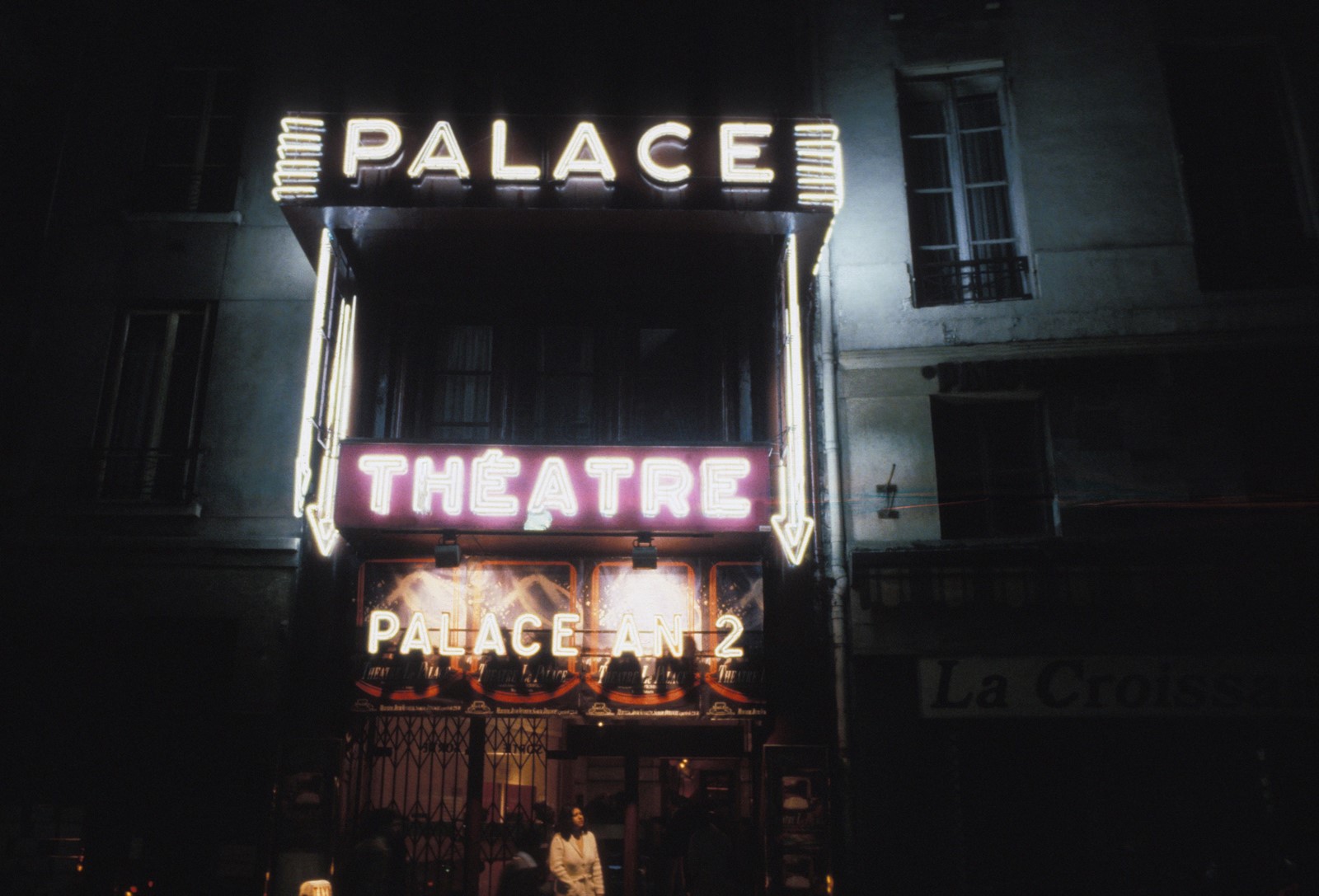“We are in Paris because Paris has always been a powerful place to tell stories,” Alessandro Michele said on the occasion of his S/S19 show for Gucci yesterday evening, the Italian house’s debut in the French city. Held at Le Palace theatre, it marked the final chapter in a three-part homage to the country of France – his Pre-Fall 2018 campaign evoked the 1968 riot in Paris, and his Cruise 2019 collection was held in Alyscamps, Arles. That said, Michele’s references were typically heterogeneous, spanning time, space and continents – from a 1970s Paris nightspot to Dolly Parton. Here, the key influences you need to know about.
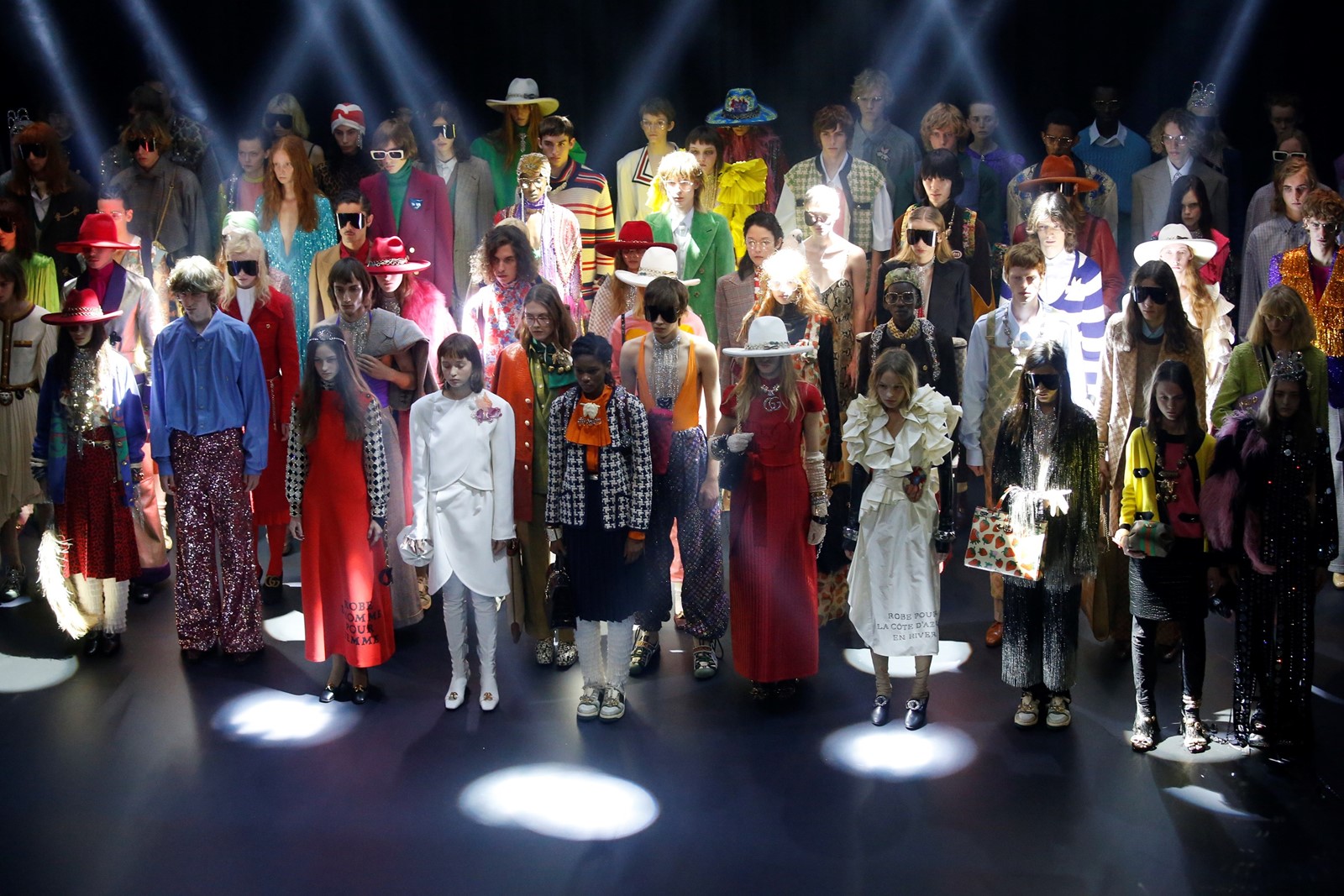
1. Paris’ Le Palace nightclub
Baptised Le Palace in 1931, the Parisian theatre first built in the 17th century has played host to both music hall and cinema in its lifetime, but its time as a nightclub in the late 1970s and early 1980s ensured long-lasting infamy. The third venture for owner Fabrice Emaer – after Le Pimm’s, a gay club opened in 1964, and Club Sept in 1968, a glamorous nightspot and restaurant incongruous with the protest of the era – Le Palace was by far his greatest success. In its five short years in existence – the club closed after Emaer’s death in 1983 – it became church to the excessive spirit of disco and those who had defined it. (The club’s most memorable performance involved Grace Jones singing La Vie en Rose while straddling a pink Harley Davidson motorbike; Andy Warhol, Jean-Paul Goude and Mick Jagger were regular guests.)
But Le Palace was as much an epicentre of fashion as music, making Michele’s choice of venue fitting – outside, potential guests’ outfits would be vetted by the notorious doorman Edwidge; inside, Karl Lagerfeld, Yves Saint Laurent and Kenzo could be found on the vast dancefloor, while Thierry Mugler designed the uniform of the nightclub’s waiters. (In the collection itself, Michele would pay homage to these designers and their exuberant creations of the same era.) Such was its visual impact that French literary theorist Roland Barthes, himself a regular, assessed the nightclub as such: “Le Palace wasn’t a club like the others, it gathered together in an original place pleasures ordinarily scattered: that of the lovingly preserved theatre, performing the gaze; the excitement of the Modern, the exploration of new visual sensations due to new technologies; the joy of the dance, the charm of possible encounters.”
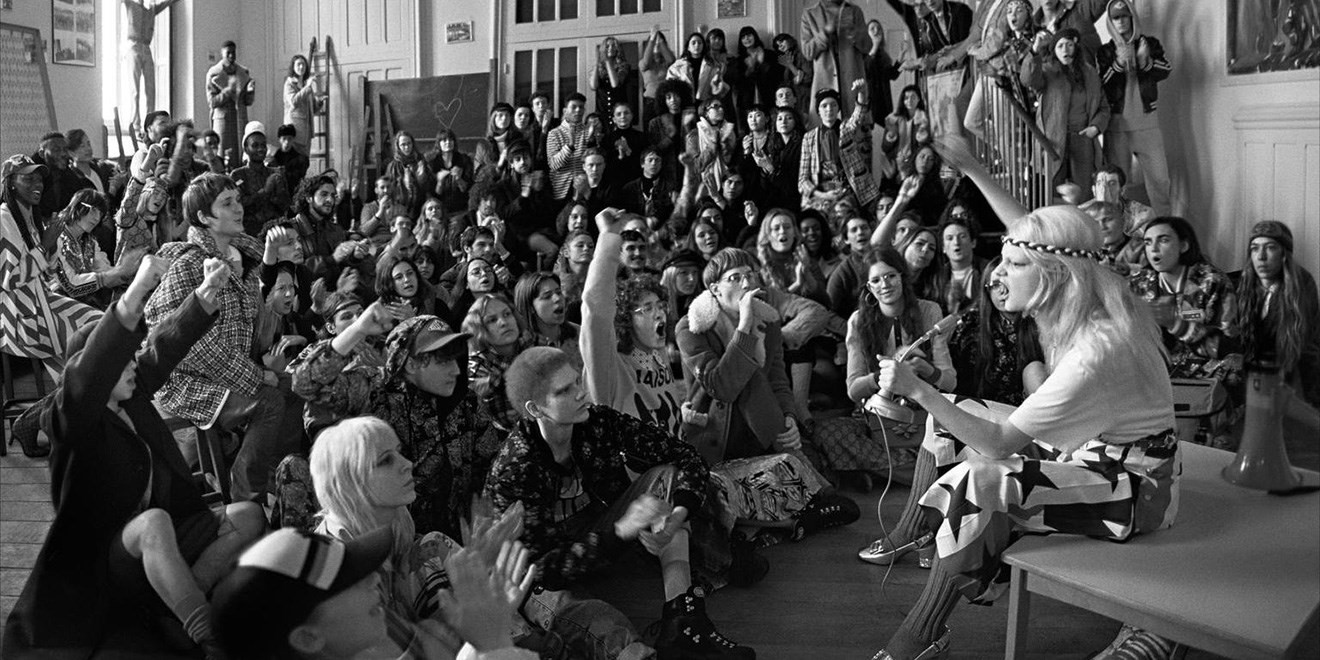
2. A celebration of France...
Michele’s decision to show Gucci’s S/S19 collection on the first night of Paris Fashion Week marks the final element of the designer’s three-fold homage to France. Among references to the country’s great designers and artists – not only did would-be Parisienne Jane Birkin sing mid-way through the show, but Michele looked to the likes of Yves Saint Laurent in his designs – instructional messages in French appeared on garments. Stamped on some of the collection’s most pared-back pieces (for Michele’s Gucci, that is) was: Robe d’homme pour femme at the bottom of a scarlet dress; Robe pour la côte d’azur on a cream ruffled tea dress; and Deux pièce pour la côte d’azur on the skirt of a royal blue skirt set (worn by a male model, naturally).
3. ... and its most treasured designers
Continuing this spirit, Michele paid tribute to some of France’s most celebrated designers. The coloured furs, 70s tailoring and fringing, for example, recall the work of Yves Saint Laurent, and bubblegum pink leathers and thigh-high go-go boots are perhaps a nod to André Courrèges. He also went further afield on the fashion map: elsewhere intricate pleats à la Issey Miyake (who has shown in Paris throughout his career), creating a bulbous yet flexible silhouette with rounded sleeves and tied together with bows, appeared on dresses and blouses, as well as flighty lettuce-edged ruffles, sweeped satin draping and imposing silhouettes that drew on the impactful designs of Italy’s Roberto Capucci.
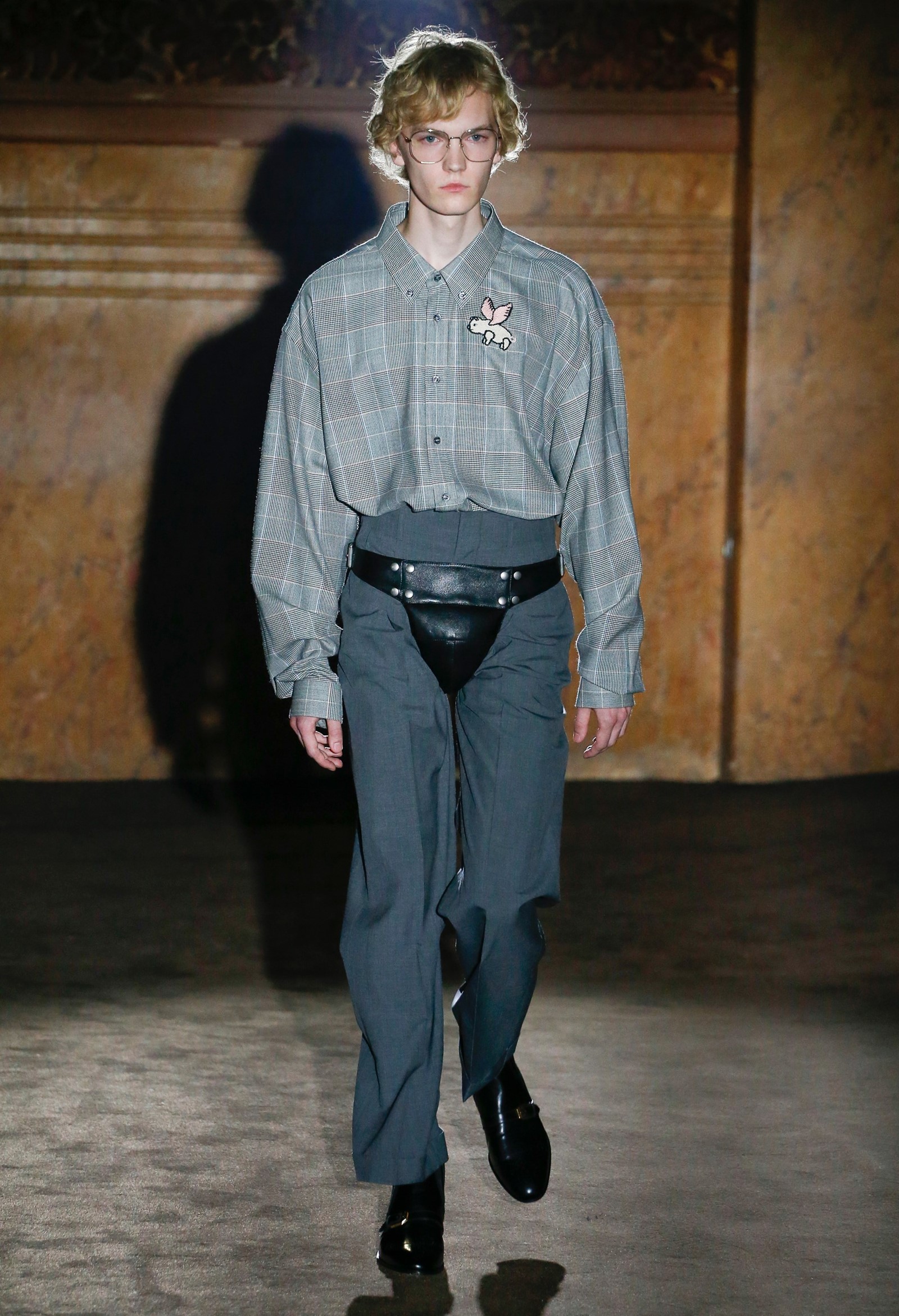
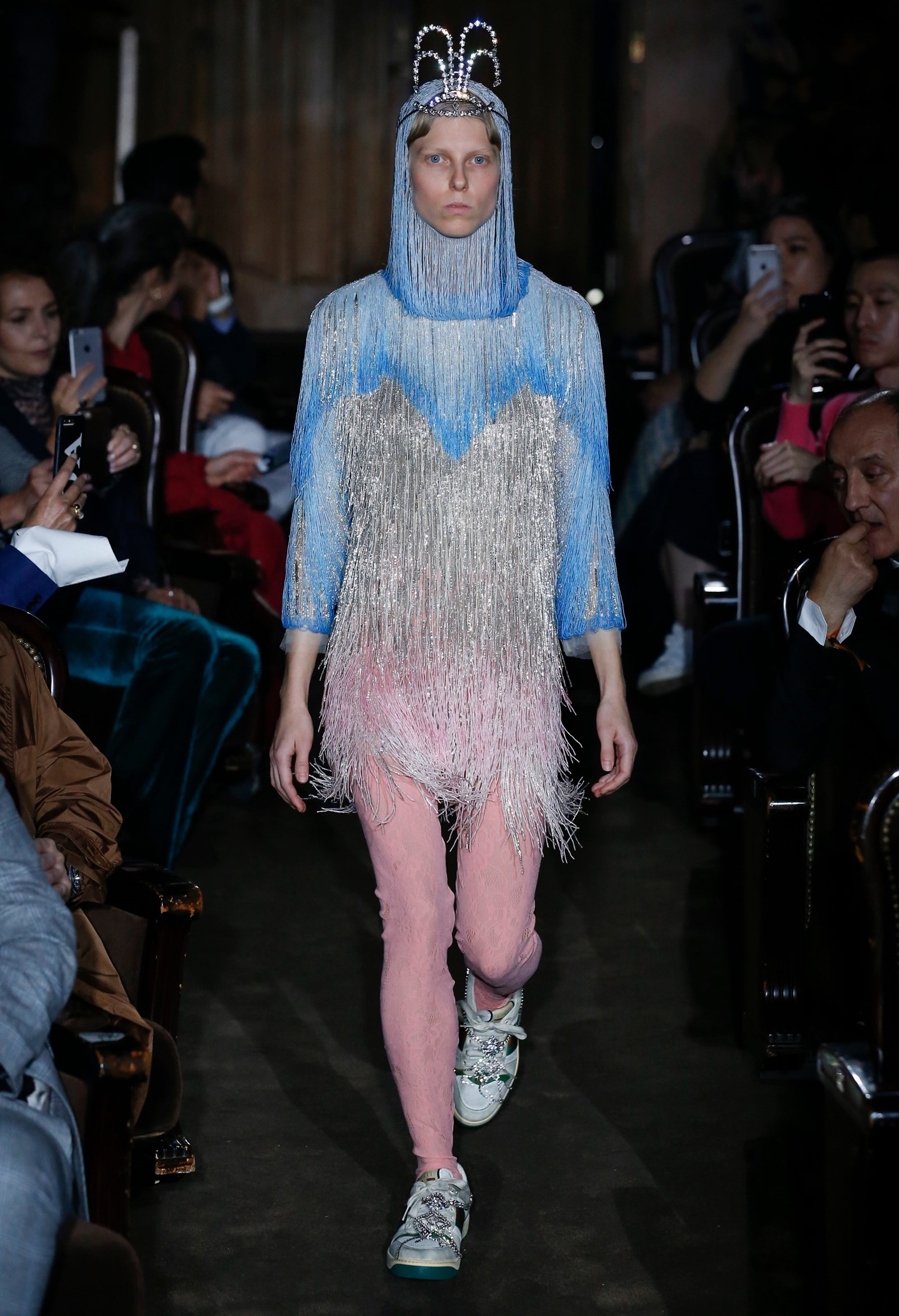
4. The unabashed sensuality of Montmartre
Paris’ legacy – as a city for fashion, music, culture, entertainment – is indelibly tied up with pleasure, in all of its various forms. So Michele’s decision to sprinkle his collection with references to sex, in the form of glitz showgirl garb, men’s leather trousers, sparkling jockstraps, and chaps (no less), is perhaps to be expected. And who better to turn his hand to fetishwear? This was hedonism at its sexiest – and in the city of light and love, Michele’s Milanese powerhouse made itself right at home.
5. A Parisian chanteuse
Halfway through the catwalk show, Michele offered the audience an interlude by way of a French songstress and icon he calls a “medieval troubadour” – another female living legend, Jane Birkin. “In life, we have breaks,” Michele explained. “I tried to introduce the flow of life.” And there was an easy informality too – despite the spotlights, drama and literal theatrics of La Palace’s setting. Birkin was sat in the back section of the stalls and stood to sing where she was – the track was Baby Alone in Babylone, from the album she wrote with late ex-husband Serge Gainsbourg, the first after their split and set against a piece composed by Brahms.
Said interlude interrupted a scattered soundtrack of Maria Callas’ wonderous operatic tones, spliced with wailing sirens: the theatre and reality, side-by-side – a perfect metaphor for Michele’s multiplicitous world. At the end of Birkin’s performance she smiled and sat back down and then the show went on – 42 more looks, more Maria Callas, and the flow of life continued.
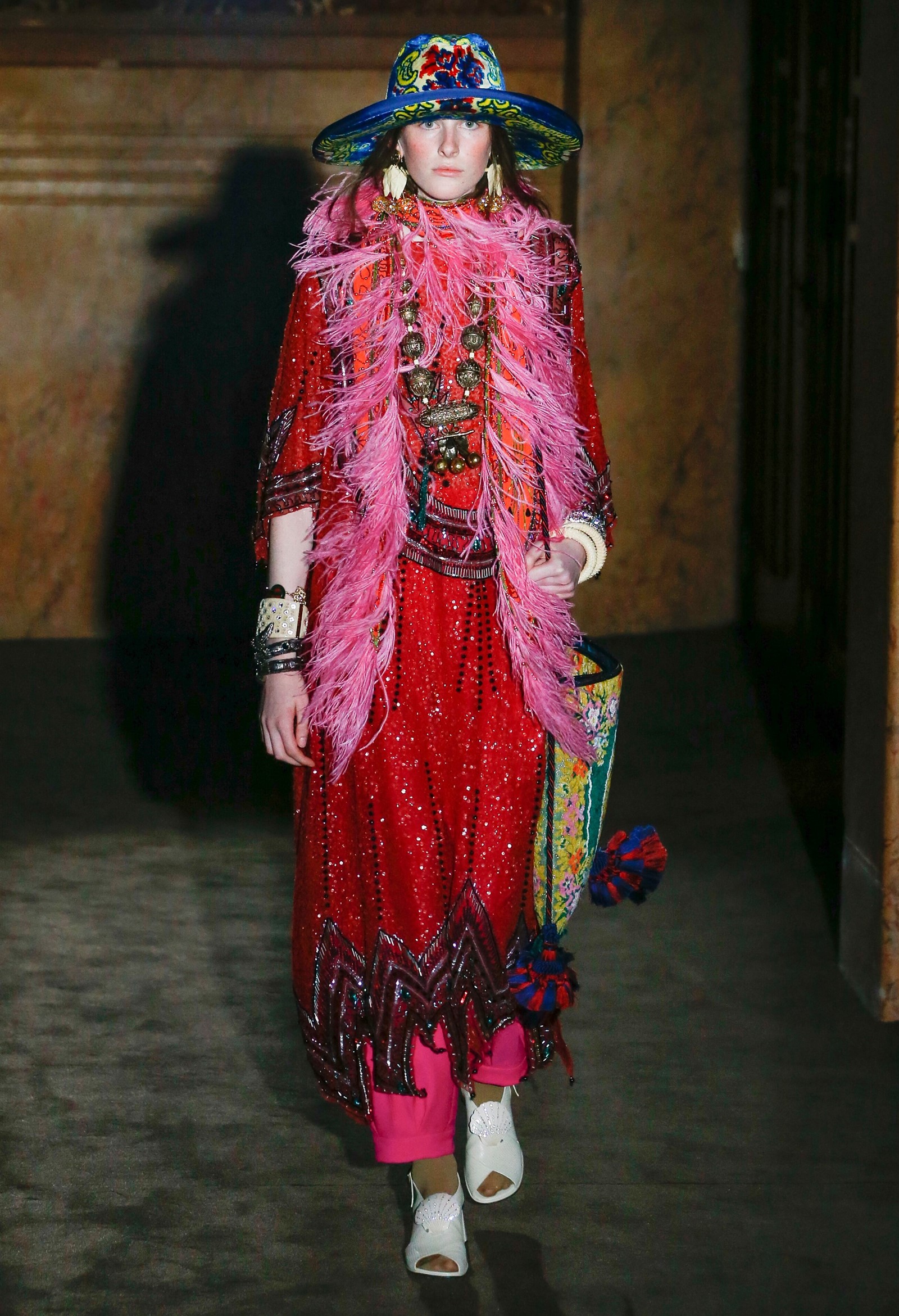
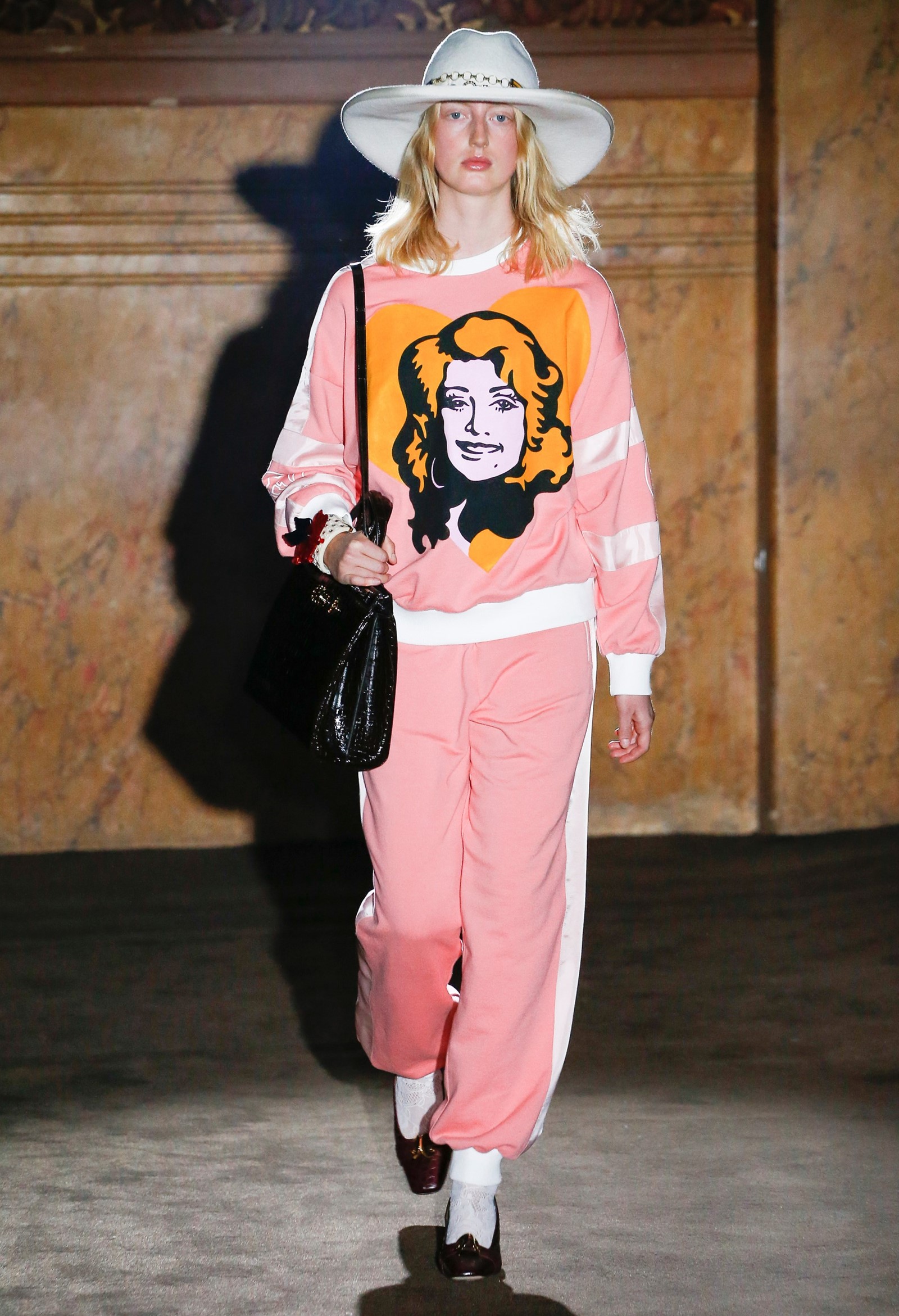
6. ... and two American divas
And Birkin wasn't the only songstress to star: the ghost of Janis Joplin opened the show. Naturally, she was resplendent: in a red sequin dropped-hem dress, a pink feather boa and a jacquard wide-brim hat and piles of burnished metal jewellery. The Michele moment came by way of spacey fuchsia slacks that puffed out above the ankle, worn with a pair of untoward grey opaques and white slingbacks ripe from the closet of your REAL grandmother (i.e. not the kitschy glam one Michele usually riffs on).
“I am reconnecting culture and popular culture,” he said after show, and nothing better summed this up than with the generous sandwiching of cartoons of Dolly Parton’s face with the greats of Italian avant-garde theatre. From pink tracksuits with Pop-Art prints of the living legend (complete with rhinestone-studded cowboy hat) to an homage spray-painted onto the back of ripped and studded denim jacket, it was like Michele had taken a trip to Dollywood, Tennessee, and designed all the best merch it never had.
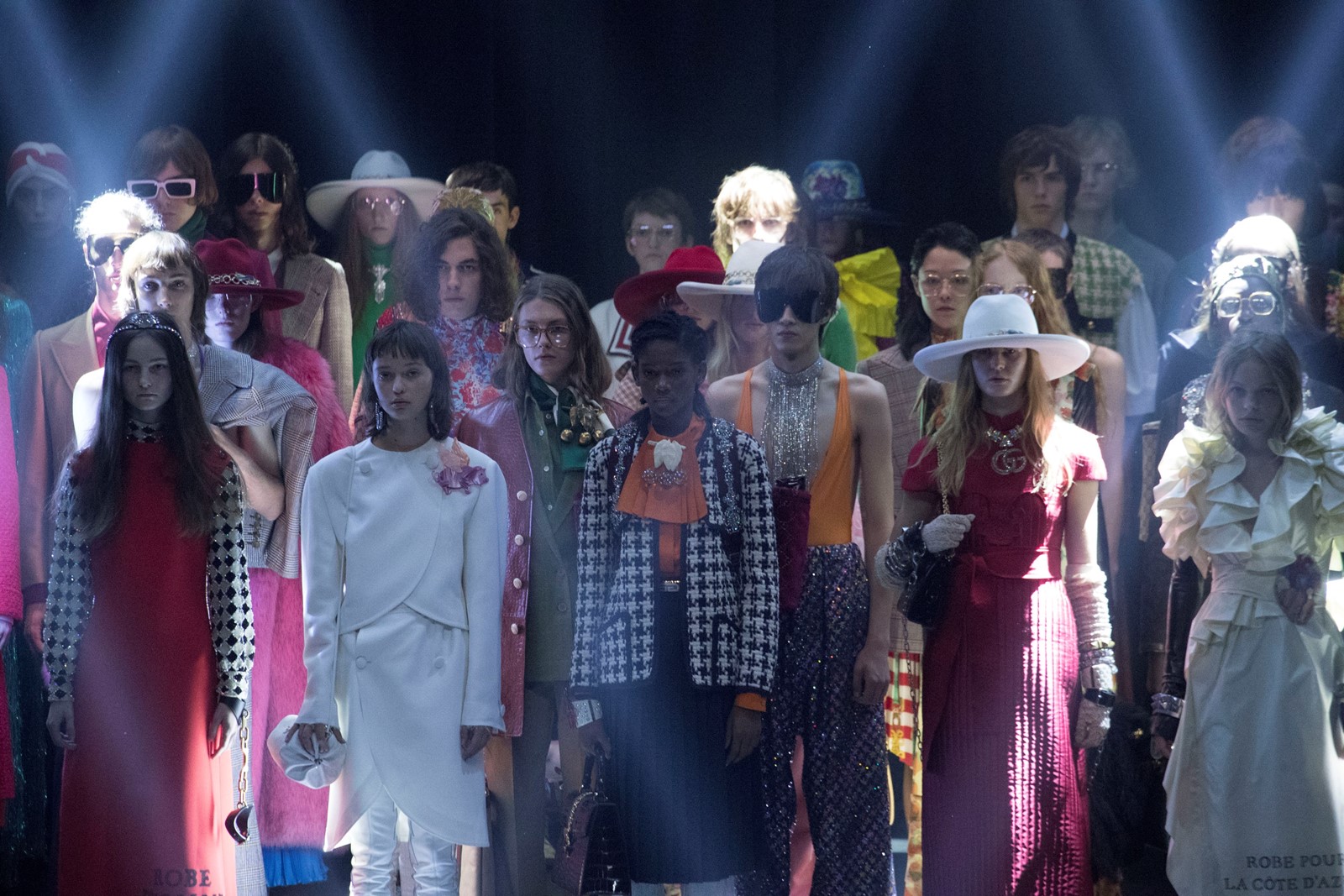
7. A 1970s Italian avant-garde theatre duo
If these references appeared less obtuse than Michele’s usual intellectual fayre, the preceding shownotes drew attention to Leo de Berardinis and Perla Peragallo, an experiemental duo who challenged the conventions of Italian theatre in the 1970s, restaging Shakespearean plays in their own unique manner. He paid tribute to their “delusional, wild, fragmented plots” and “theatre of contradiction”, both descriptors that could well have described Michele’s idiosyncratic offering. The show also begun with a film by the pair, a surreal collection of images that evoked the viscerality of Roman Polanski’s Repulsion, and ended with theatrical flourish: the entire cast stood on the stage, lit by spotlights.
